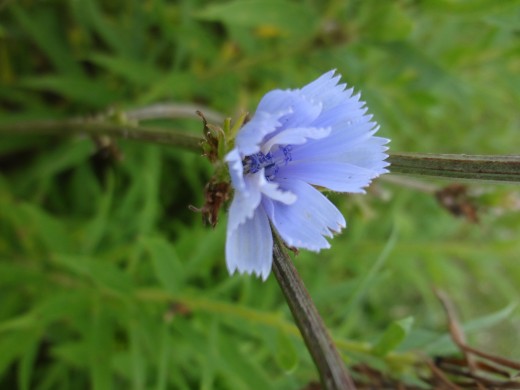Midwestern Prairie Plants
Prairies: What they do
Prairies provide many benefits to the land. Some of the functions of a native prairie are:
- Fertilize the soil
- Protects soil from erosion from wind and rain
- Rainwater soaks into the land better instead of rolling off into a watershed
- Prairie plants survive wild fires better than wooded areas and can survive more frequent fires

Illinois Prairies: History
In the 1850s, over 62% of the state of Illinois was covered in prairie which is equal to 22 million acres of land. These days the number is only somewhere around 2,500 acres. Many acres have been lost to farm land and building development.
Awareness in natural ecosystems, native plants and the crisis for pollinators (especially bees) have prompted many organizations and counties to try to restore the natural prairie that once was. We have a long way to go, but is encouraging to see some many abandoned sites given back to the land. A good example of this is the former munitions plant, Joliet Arsenal, located in Will County, which has now become Midewin Prairie Preserve.


Do you have native prairies near your town?
Most common Types of Prairies in Illinois
The most common type of prairie found in Illinois is the Tall Grass Prairie, which is mostly comprised of Indian Grass, Switch Grass and Big Bluestem. These grasses can grow to 12 feet tall! Imagine what the Native Americans might have seen as they were hunting for Buffalo. Grasses so tall, you would need to be on a big horse to be able to see over them!
Most of the flowering plants and grasses found in the prairie are also perennial. Perennial plant roots can lie up to 15 feet deep in the soil, which helps them draw water from deep down during drought periods. Deep roots also penetrate below the frost line which help the plant survive the harsh winter months of the Midwest.
Wildflowers of the Prairie
The wildflowers found in the prairie bloom at a variety of times, so there is always a constant flush of color. They start about mid-April and last through October. There are an estimated 300 different varieties of wildflowers found in Illinois prairies. These flowers attract a variety of beneficial insects which help pollinate our food supply. The seeds of these wildflowers also help feed birds and small mammals.
The most common wildflowers are:
- Compass plant
- Blazing Star and Rough Blazing Star (Liatris)
- Prairie Coneflower
- Black-eyed Susan
- Milkweed
- Queen Anne's Lace
- Aromatic Aster
- Cardinal Flower
- Cutleaf Coneflower
- Goldenrod
- Missouri Evening Primrose
- Small White Aster
- Rosinweed
- Chicory
- Thistles (Canadian and Field varieties among others)
- Purple Coneflower
- Maximilian Sunflower/ Perennial Sunflower

Did You Know?
The word, prairie, is French for meadow.
Queen Anne's Lace
Also known as Wild Carrot, this flower blooms late spring through mid-fall and can grown 5 to 6 feet tall. Each flower head is actually a cluster of tiny, individual florets. Sometimes, these flowers can be found to have a dark red or purple dot in the center, but this isn't always the case. Because it is in the carrot family, it does provide a carrot like scent at the roots of the plant.
Beware! It can be hard to identify; there are several other flowers that look similar, but are toxic, so be sure you can identify it positively before you touch it!


Liatris aka Blazing Star
Both the regular Blazing Star and the Rough Blazing Star can be found in the Midwest. The regular type can also be found in suburban flower beds as well. The flower is characterized by an upright, spiked hairy appearance the flower comes in both purple and white. It can reach 5 feet and blooms July through October.
Black Eyed Susan
Perhaps one of the most identifiable flowers, the Black Eyed Susan is characterized by a black or brown eye and golden yellow petals that are daisy-like. It blooms June through September and grows 2 to 4 feet tall.

Wild Evening Primrose
These tall flowers in the primrose family can grow to 6 feet tall. Sometimes referred to as Sun Drops or Sun Cups, the flowers open from dusk until dawn (or on overcast days) which allows nocturnal moths and other insects to provide pollination. They bloom summer through fall.


Rosinweed
Similar in size to the Compass Plant and Maximilian Sunflower, Rosinweed is a very tall plant, spanning 6 to 8 feet. It blooms July through September with golden yellow petals and yellow to brown center eyes. These flower petals have a drooping habit which is very similar to those found on yellow prairie coneflowers.
Conservation
We have a long way to go in terms of conservation and restoring natural prairie systems. You can get involved by joining your local county extension office, volunteering to help clean up abandoned sites or even just incorporating some native prairie plants into your own garden landscape.









